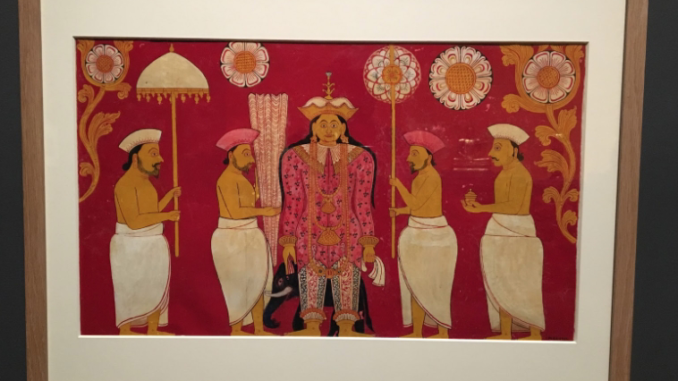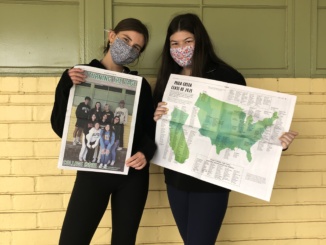
Clare Beezhold
Staff Writer
“The Jeweled Isle: Art from Sri Lanka” exhibit gives viewers a look into the history of Sri Lanka’s complex past and provides an overview of the many different influences that shaped the country into what it is today.
The new exhibit at LACMA, “The Jeweled Isle: Art from Sri Lanka,” includes 240 works covering two millenniums of Sri Lankan history. The works in this exhibit include not only precious jewels, as is suggested by its title, but also decorative objects fabricated from gold, silver and ivory, 19th century photography and textiles and furnishings.
The collection of works, which represents one of the finest and most extensive collections of Sri Lankan art in the US, provides the visitor an introduction to sacred sites and relics from the island. It also issues information of the constant interactions between Sri Lanka and it’s neighboring South India, and the influence of colonial rule first by the Portuguese, Dutch and Britain.
This exhibit also provides the visitor insight into the island’s long historical ties to both Buddhism and Hinduism. Pieces in the collection convey the importance of holy sites and artifacts in Sri Lankan Buddhist practice. The exhibit also includes rare images of Hindu gods confirming the long and constant interaction between Sri Lanka and South India. These insights aid the viewer to understand the importance that religion has on the history and shaping of Sri Lanka.
The exhibit focuses on photography, sculptures, ivory pieces and gold/silver pieces. The exhibition presents a timely exploration and celebration of the geographically complex and ethnically diverse culture of Sri Lanka. The quality of the art displayed in this exhibit is outstanding. Moreover, the creative arrangement of spaces within the exhibit to reflect the influence of Buddhism, Hinduism, European colonizers and South India is ingenious.
The most prominent and largest piece in the exhibit is “Temple Hanging with Scenes from the Ramayana” from 19th century Sri Lanka. The textile piece tells the entire story of the Ramayana, a sanskrit epic, in a series of fifty two scenes. Reflected in these scenes are gods, demons, heroes, villians, husbands, wives, children and other figures whose exploits provided models of behavior and morality while also communicating an understanding of the Hindu religion and philosophical thought. It is constructed of painted and dyed cotton and is the only one of its kind that exists from Sri Lanka. Each of the fifty two scenes were hand-drawn on dyed cotton cloth using a bamboo pen. This once in a lifetime piece leaves the viewer speechless due to its monumental size and its insight into the Sri Lankan Hindu morality.
Another piece featured in the exhibit is “Greater Kohomba from the Himala Forest and Attendants” from the early 19th century Kandy, Sri Lanka. The piece is beautifully done and is a vibrant opaque watercolor on white European paper. This painting, along with two matching in style, are very memorable with their bright red and gold coloring lit up in the darkened exhibit hall next to sculptures made of stone. This piece historically and culturally is also significant because it depicts the important tradition of the tooth relic and the parade associated with it.
If art lovers are looking for something not only “out of the box” but also “out of the bubble,” this exhibit is worth making the trek to the mid-cities district to see. After spending two hours at exploring this exhibit, viewers are ready to book the next flight to Sri Lanka.
While “The Jeweled Isle” exhibit opened its doors on December 8, 2018 there will be a special Opening Ceremony taking place on December 16, 2018. The exhibit will remain open until June 23, 2019. For more information regarding this and future exhibits, visit www.lacma.org.





Leave a Reply